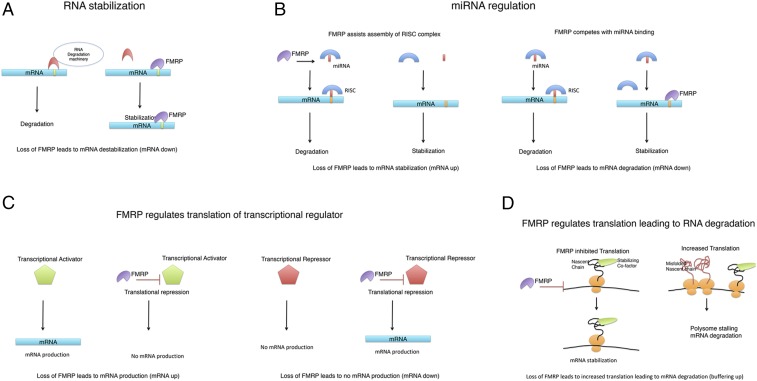Fig. 1.
Schematic for how loss of FMRP leads to changes in mRNA levels. (A) Sites in the mRNA (yellow bar) that bind to RBP link to the RNA degradation machinery, leading to RNA degradation. FMRP stabilizes mRNAs by competing for these sites. (B) FMRP assists in miRNA loading, leading to RNA degradation of the mRNAs targeted by that miRNA. Alternatively, FMRP binding to mRNA can prevent miRNA binding and stabilize mRNAs. (C) FMRP normally translationally represses both transcriptional activators and transcriptional repressors. Loss of FMRP increases levels of these proteins, leading to transcriptional changes. (D) FMRP increases ribosome loading on a subset of mRNAs. If these mRNAs are part of a complex, the altered stoichiometry of the complex may lead to unfolded nascent chains, ribosome stalling, and degradation of the mRNAs. RISC, RNA-induced silencing complex.

